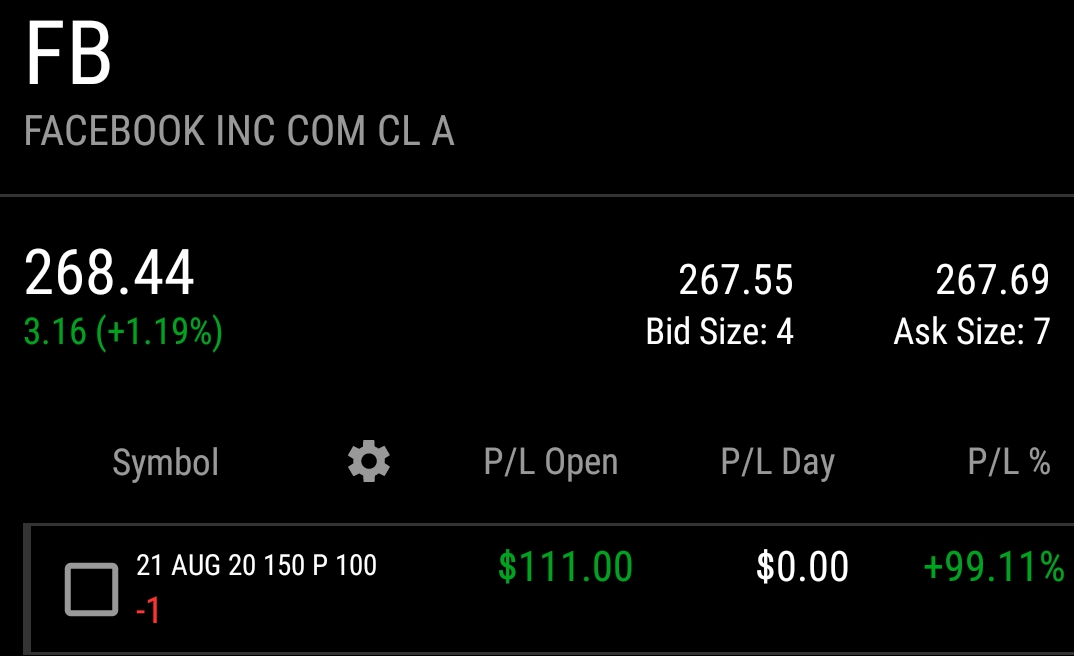Selling Put Options
Options Investing Hub ⮞ Selling Put Options
Introduction To Selling Put Options

This is one of my personal favorite strategy as it is what brings in the cash flow for my portfolio.
And cash flow, is kinda like dividends - so it is the actual cash that comes into the investment portfolio.
However, I want to be upfront about this. This strategy is more suitable for people with a larger portfolio.
I would say a portfolio of more than $50,000 would be a comfortable amount. The reason for that is because this strategy involves selling cash secured put options, which means you need to be able to have the cash to buy 100 shares if the put options are exercised.
I will explain this in detail in the following sections.
However, for those who are starting out with a smaller portfolio - don't be discouraged.
A thousand mile journey begins with a single step.
I started my portfolio with my first $10,000 of savings too.
What's important is to get started - and start early. After all, the secret of getting ahead of others is to get started.
If you have a smaller portfolio, you can always start with the long call strategy or simply buying stocks.
And as you build your portfolio, you can then start to explore the sell put strategy.
With that, let's get started on the sell put strategy.
Why Sell Put Options
The reason for selling put options is to make money while waiting for the stock to be undervalued.
For example, let's say I calculated the entry price of stock XYZ to be $150 but the current share price is at $160.
Note: If you are not sure how to calculate the entry price of a stock, be sure to check out the Stock Investing Hub.
When we are investing, we want to be discipline investors. This means that we will wait for the stock to reach our entry price. However, we are also worried that the share price may never hit our entry price - and we end up missing the boat.
The solution to that is to sell put options, so that we are able to collect cash flow while waiting for the stock to become undervalued.
In fact, I have used this strategy to collect a good amount of cash flow every single month.
So what exactly is selling put options?
What Is Selling Put Options
When you sell a put option, it means that you are promising to buy 100 shares of the underlying stock at the strike price of the option.
In return for this promise, you collect an option premium - which is what I call the cash flow.

For the above example, I sold a Facebook option with a strike price of $150.
(This is because I calculated the entry price of Facebook to be $150 at that point of time.)
Because I sold this option, I am promising to buy 100 shares of Facebook at $150 each. This is an investment of $15,000.
Because of this promise, I collected $111 in option premium.
The expiry date of this promise is on 21 Aug 2020, which means that after 21 Aug, I no longer have the obligation to buy the 100 shares anymore.
Let's go through some examples.
Example 1a:
Gin sold a put option on stock ABC at strike price of $220. How many shares is he promising to buy?
a) 50
b) 100
c) 88
Ans: Well, when we sell a put option - we are promising to buy 100 shares of the underlying asset (unless otherwise stated).
Example 1b:
Gin sold a put option on stock ABC at strike price of $220. This means that he is promising to buy how much worth of shares?
a) $220
b) $22,000
c) He is not obligated to buy any shares.
Ans: $22,000. This is because when he sell a put option, he is promising to buy 100 shares of ABC at $220 each.
It is important to make sure that you have the cash to buy the stock in the event when the sell put option gets exercised.
However, in what scenario will your sell put gets exercised?
Well, it will get exercised when the share price is below the strike price at the time of expiry.
Here's an example.
Example 2a:
On 23 Jun 20, Gin sold a put option on stock XYZ at strike price of $120. This option expires on 23 Jul 20.
At the closing of 23 Jul 20, XYZ is at $125. Will Gin be required to buy 100 shares of XYZ?
Ans: Nope. Because the share price at expiry date is above the strike price of the option of $120. Therefore, the option will not be exercised.
Example 2b:
On 14 Apr 20, Gin sold a put option on stock XYZ at strike price of $80. This option expires on 14 Jun 20.
On 7 Jun 20, the share price falls to $50. Will the option be exercised?
a) Nope, because it has not reached expiry date.
b) Most likely, because the share price has fallen significantly and there is little time to expiry.
Ans: Well, the answer in this case in B. In some cases, when the share price has fallen significantly below the strike price and there is little time to expiry - the option may get exercised early. While this is very seldom, it is important to take note of this.
One key concept is to make sure that you are always selling cash secured put options.
This means that if you promise to buy $10,000 worth of shares, you have to make sure that you have $10,000 cash set aside in your brokerage account.
Otherwise, you will making an empty promise - and risking a margin call that can potentially wipe a good chunk of your portfolio.
Example 3:
Gin only has $5,000 cash in his portfolio. He decides to sell a 150 put option on stock DEF. This means he is promising to buy $15,000 worth of shares. What will happen if DEF falls below $150 at the time of expiry.
Ans: What Gin did was to sell a naked put option where he does not have the cash required to fulfill his obligation to buy $15,000 worth of shares.
If the put option gets exercised, he will used up his $5,000 and "borrow" the remaining $10,000 from the broker - incurring a margin. However, brokers will only lend up up to a certain amount based on the available equity you have. This results in a margin call where the broker will ask Gin to top up the brokerage account or the broker will liquidate Gin's positions.
In short - do not sell naked put options.
Quiz Time
Before we head on to discuss the Pros and Cons of the sell put strategy, let's test your understanding.
Note: One of the biggest reasons why the options hub was built as there were too many people who get burnt because of the lack of knowledge of how options works and its risks involved. This resource hub aims to equip beginner investors with the knowledge of options and how they can manage their risks when investing with options.



